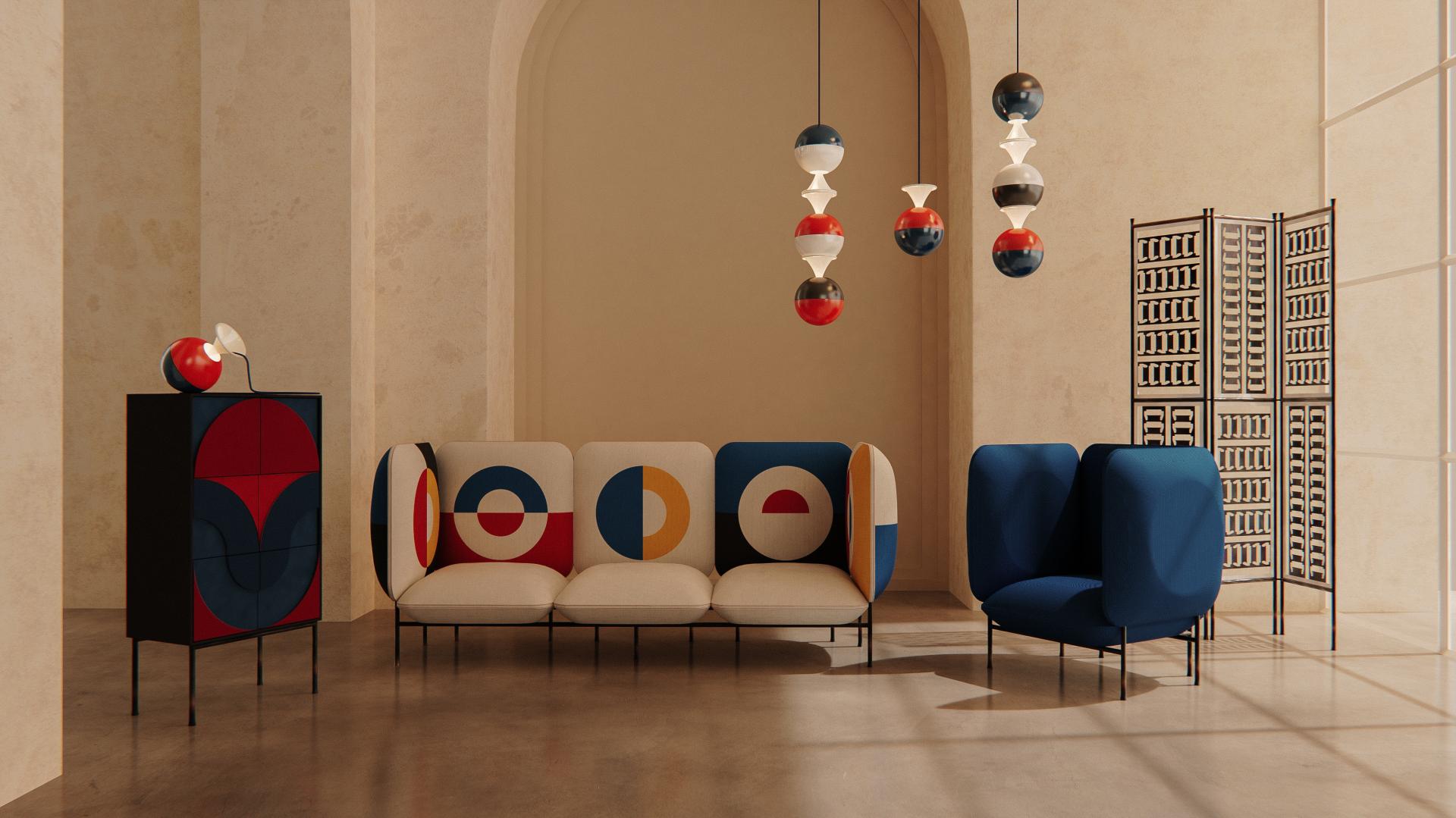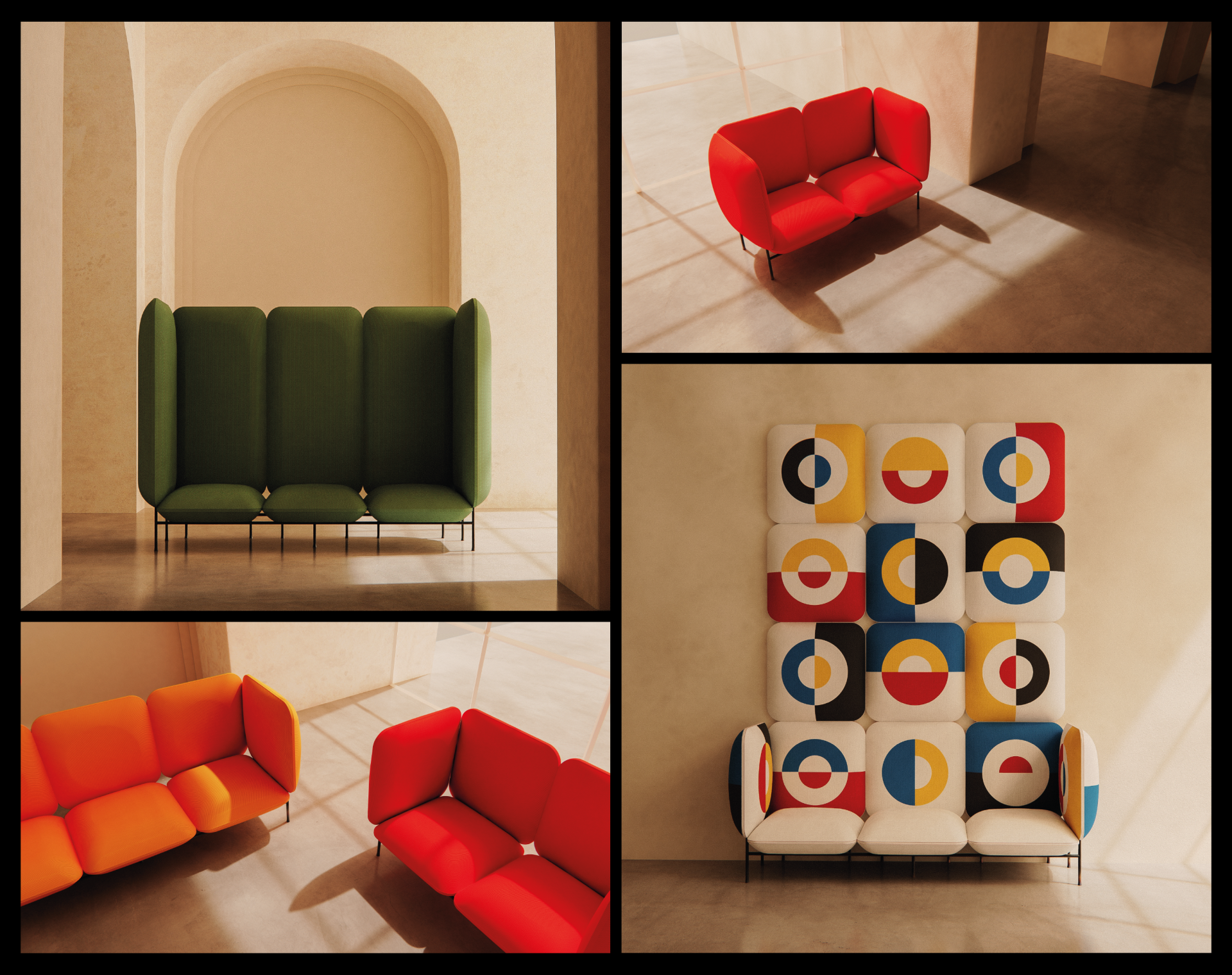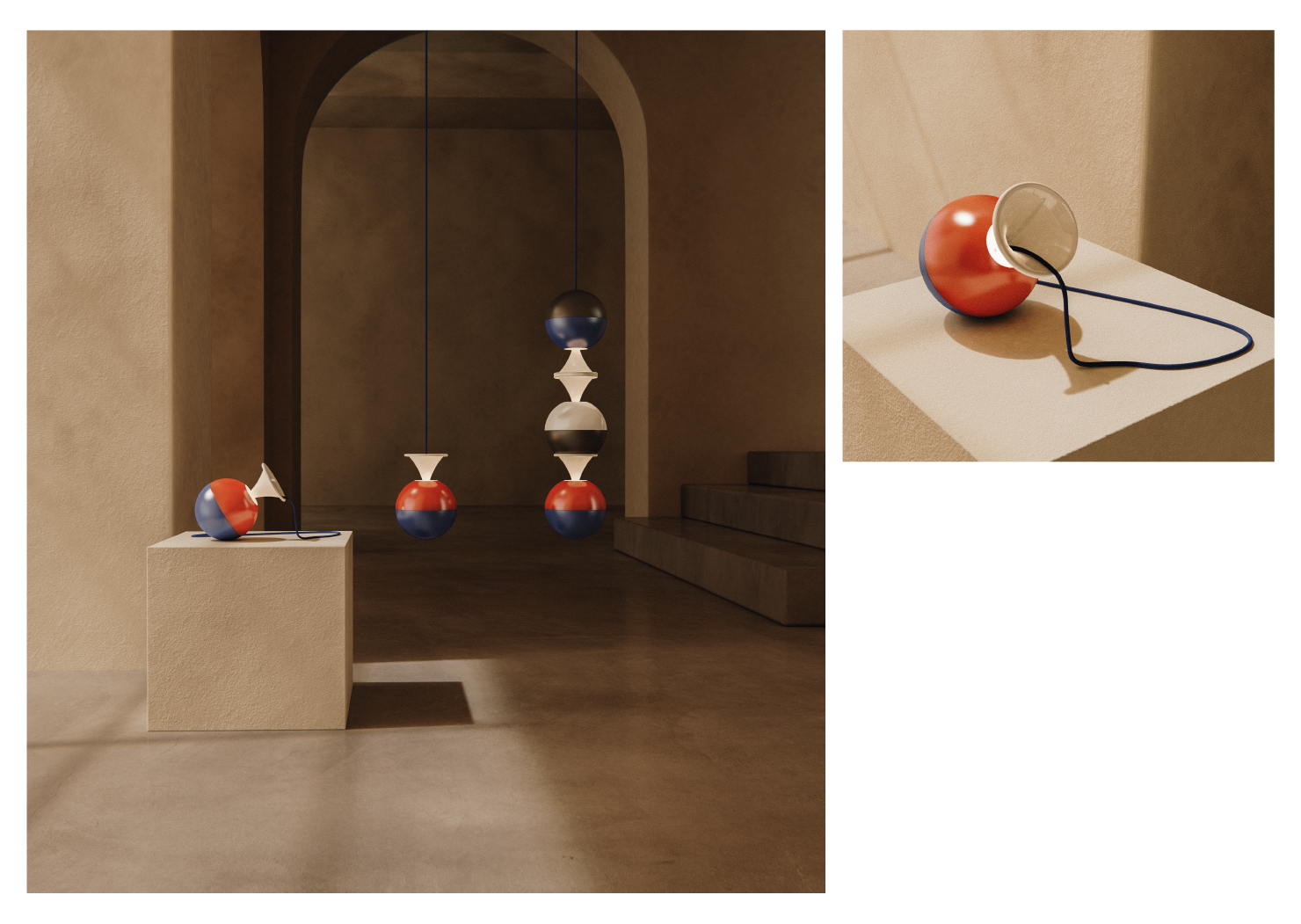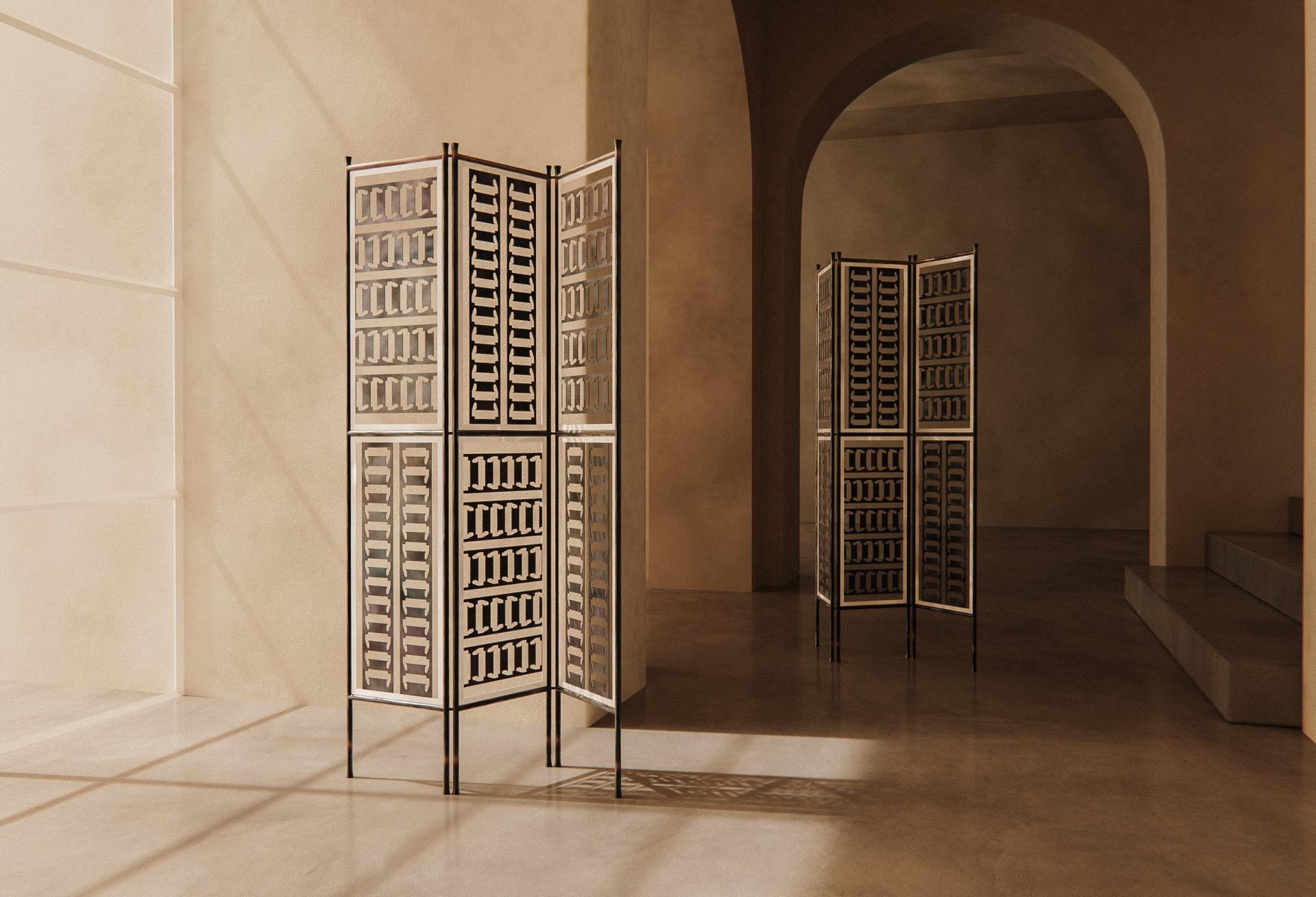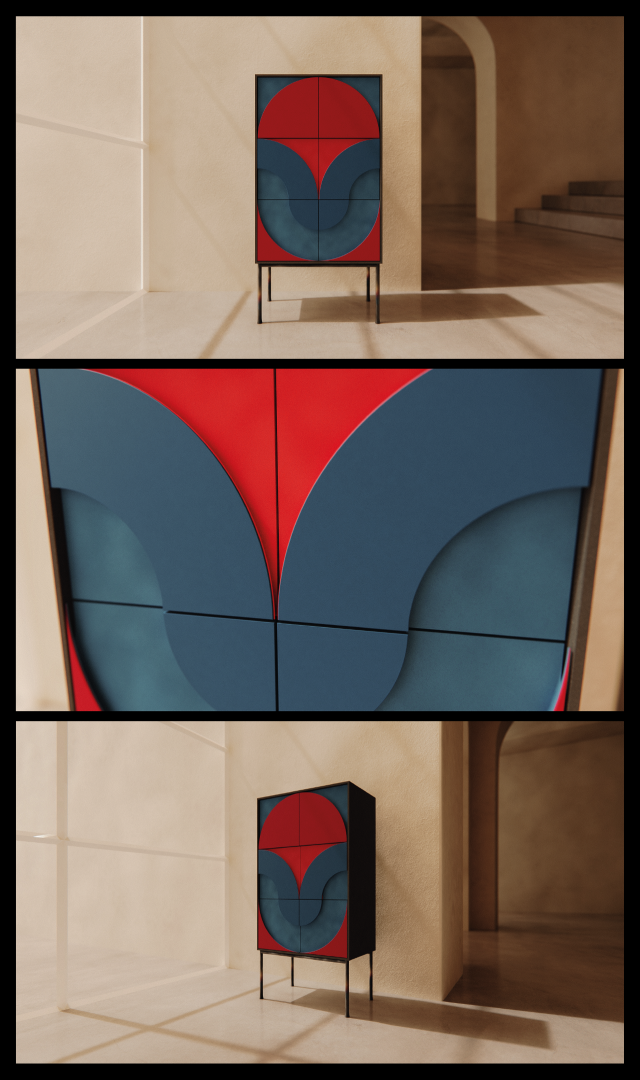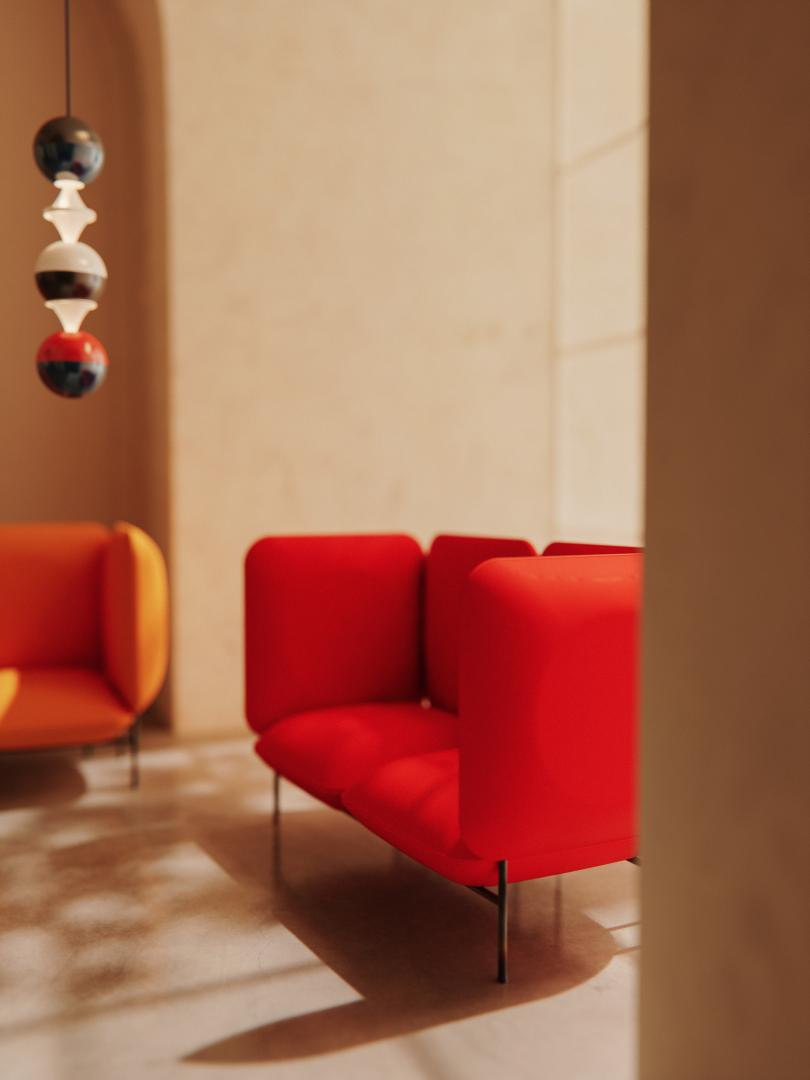Burnt Geometry
Basic information
Project Title
Full project title
Category
Project Description
The furniture collection connects to a Hungarian cultural sequence line, including the Bauhaus movement, the Pécs Workshop (1968-72), and the present. Referring back is not just romantic contemplation, but a real revival of the ideological, practical, and technological legacy. The collection has a multi-threaded mission; preserving cultural heritage, using innovative, sustainable technological solutions, and providing a valid answer to current functional and aesthetic needs in the design world.
Geographical Scope
Project Region
Urban or rural issues
Physical or other transformations
EU Programme or fund
Which funds
Description of the project
Summary
The furniture collection connects to a Hungarian cultural sequence line, including the Bauhaus movement, the Pécs Workshop (1968-72), and the present. Referring back is not just romantic contemplation, but a real revival of the ideological, practical, and technological legacy.
One of the Pécs Workshop's most notable activities was the „enamel camp in Bonyhád”. Bonyhád is a Hungarian city where they experimented with enamel technology led by Ferenc Lantos. Their approach was strongly influenced by the Hungarian roots of the Bauhaus movement and the spirit of Victor Vasarely’s work. My design tries to bring back this approach adapted into the contemporary design world - examining the sustainability aspects of enamel technology. It was really important to connect with Hungarian roots and culture while giving them a new perspective, so we decided to manufacture the enamelled pieces in the same factory in Bonyhád. We work with domestic manufacturing partners on the other pieces as well.
Burnt Geometry consists of four different types of objects; a seating furniture family DEDAS, a cabinet family Vanishing cabinet, a modular lighting family Roly-Poly and a room divider Dad’s fence. During the manufacturing, there have been experiments with surface finishes and innovative structures and technologies in upholstery. I chose a sustainable fabric from JAB Anstoetz, that is a textile company of German origin. This is a special homage to the German and Hungarian common history of Bauhaus.
Each piece of furniture can be easily assembled so that we can increase the life cycle of each item by replacing any parts that may be damaged. Besides, this makes the development simpler, more economical, and more environmentally friendly.
The objects have a strongly geometrical nature while keeping sophisticated and clear forms. Each piece is an experiment in form, investigating the visual decorativeness of possible functional elements.
Key objectives for sustainability
Burnt Geometry aims to fit environmental and sustainability criteria not only by the minimalized waste production but also by the long life-cycle of each product. The collection is going to be produced in small series, to hold the production in local manufacturers' hands and to keep under control the quality and waste management.
DEDAS has sustainable surface finishes, like burning and waxing, on its metal legs. The upholstery was selected from the sustainable assortment of Climatex®. These fabrics follow the Cradle to Cradle principle. A huge part of the foam has been already recycled and we solved to cut it for the final geometry instead of producing expensive injection molding tools. The tailoring pattern of the fabric is economical, and the structure can be easily dismantled so the parts can be replaced.
The Roly-Poly lamps are enameled in Bonyhád (just as the inspirational artworks), which technology fits the sustainable criteria, considering the entire material is 100% recyclable and long-lasting.
Vanishing Cabinet is made from sustainable materials like the colored MDF and furniture linoleum, using the same waxing and burning surface finishes on its legs.
Dad’s fence evokes a phenomenon of Hungary when, especially in the vicinity of rural metalworking factories, a unique „applied arts” product appeared, the homemade metal fence, with its own characteristic aesthetic. Its raw materials are punched metal sheets, leftover from the part-making process of industrial metal factories. The poor man's resourcefulness gave birth to this seemingly deliberate, but in fact accidental, waste recycling practice, that, to this day, is a living part of the countryside. The piece of furniture directly draws attention to the phenomenon of upcycling and the resourcefulness of the needy.
Key objectives for aesthetics and quality
The pieces reanimate a long-forgotten visual language and evoke the spirit of Hungarian art in the 1970s. Each piece has the potential to honor its environment and act as a visual statement with a playful and bright tone.
DEDAS is inspired by an outdoor enamel frieze, “Dédász”, created by Ferenc Lantos, now repositioned to the interior. Its playful scale change allows the backrest to enter the architectural scale by climbing up the walls and becoming an acoustic wall panel structure. I played with the combination of graphic decorativeness and ergonomics/function as well. This object is very adaptive; both configurations can be sorted arbitrarily and colors can be varied. The higher backrest and “armrest” provide a frame and proxemic protection for the user. It can shape the space in a characteristic way, due to the 3D shape pattern on its back.
The presented Vanishing cabinet has a simple, yet conscious characteristic, turning the functional details, such as the handle, into an important element of the overall visual appearance. This piece is also adaptive, variable with infinite possible variations.
Dad’s fence brings outdoor visuals into interior spaces. Each punched silhouette had a function before and a story that we don’t know about. What were the explanations behind the figure that was incomprehensible to us? What kind of machine/element was made that needed that shape? As a designer, it’s very exciting to have an exact element system: the waste, and the “creation,” come from the variability of that element system.
The lamps evoke the shape of the popular toy “roly-poly” eradiating the same playfulness as the other enameled toys from the socialist times, yet keeping the forms simple and geometric. Using the lamp is very intuitive; the cone-like element is a switch, so you can turn on the lamp by touching the entire luminaire and rotating the cone. The experience is multisensorial - you have to touch the smooth, cool, enameled surface to turn it on.
Key objectives for inclusion
We are working with local manufacturers on the development (except for the upholstery) and the long-term production, which ensures continuous work for many people in Hungary. The enamel factory in Bonyhád now produces almost exclusively outdated pots and street signs, so the Roly-Poly lamp family can open up a whole new perspective for them in the future. Due to the pandemic, the need for local infrastructures has increased, and these objects fit perfectly in this phenomenon. For this reason, we consider smaller series manufacturing only, which is also justified by the quality aspect and interchangeability (ensuring circularity) reasons. Dedas was specially designed for public spaces, but each object (and system) can be placed in a public space (university, library, etc.), therefore they are inclusive in terms of use rather than buying, still accessible for use to every people. The collection highlights works of valuable, less-known Hungarian artists and has the potential to keep up this intention in the future providing opportunities - as in co-designing capsule collections for Dedas and Vanishing cabinet - for young designers.
In terms of materials, the fabric used for the DEDAS seating collection has been selected with a precise focus on the tactile features as well, making them as comfortable as possible without any disturbing details. The Roly-Poly lamps have simple access to them, with the cone itself being the switch, making it extremely easy to use.
Physical or other transformations
Innovative character
The main approach is that we are striving for sustainable methods and long life cycle furniture which is contemporary in shape and materials yet reanimating an important piece of the Hungarian heritage and a certain visual language.
The technologies used during the manufacturing such as the metal surface treatments (burning and enamel technology) and the precisely selected fabric provide a certain aesthetic that can’t be recreated by any other treatments.
The small piece of Hungarian art history - meaning both visuals and technology - reanimated in the collection has the possibility to be shown to an international audience and thus give the recognition it truly deserves.
The modularity of DEDAS not only serves personalization but also makes it easier to change or repair each of its elements when an accident occurs, and the same applies to the Vanishing cabinet.
Roly-Poly combines shape and function in a way it recalls its playful inspiration, a children's toy, yet resulting in an utterly stylish object with smart technological solutions.
The room divider commemorates the partly cultural-historical, partly folkloric, naive and incentive applied arts phenomenon and places it on the furnishing palette of modern, environmentally conscious homes.
These factors all strengthen and contribute to each other. Good furniture, we believe, must have a long life cycle so that it can be there for multiple generations, still keeping the same values. Being well-made must mean the pieces are affordable and pleasing both visually and functionally. The collection spreads both the message of its roots and inspirational sources as well as its own story reflecting on the challenges of the contemporary needs and design world.
The collection promotes the practice of reanimating existing traditions and technologies meeting contemporary needs while upgrading significant visual elements into functional pieces.

